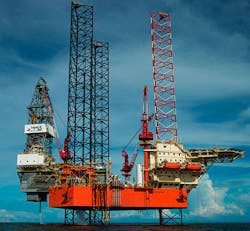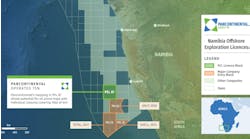Offshore staff
HAMILTON, Bermuda – Seadrill has issued an update on its latest rig contracts and market prospects for the offshore drilling industry.
The company has secured a three-month contract for theWest Vigilant starting this month, under an existing agreement with Repsol offshore Malaysia.
TheWest Ariel was moved to non-operating flotel mode, with the day rate reduced to $120,000 from July 2016 through February 2018.
The contract forWest Freedom was extended to June 30, 2017. Cardon IV, the offshore Venezuela joint venture, expects to re-start operations at a rate of $225,000/d early next year.
TheWest Castor has a new one-year contract with Eni offshore Mexico that begins in December.
With oil prices stabilizing in the $40-50 range, there is a growing belief that the industry is at or near the bottom of the current downcycle, Seadrill says.
As oil companies see the impacts of their spending cuts over the last two years, there is a growing realization that the current level of investment is not sustainable. Increased capex will therefore be needed to slow decline curves and grow production at some point.
There are signs of increases intendering activity for offshore drilling, although generally for short-term work. Multiple rigs continue to be bid for all opportunities, with a significant supply overhang.
Although scrapping and stacking activity is addressing some of this overhang, it remains unclear when rates will start to pick up. A clearer picture of demand in 2017 could emerge when annual budgets are released later in the year.
Most of Seadrill’s conversations with clients at present concern “blend and extend” arrangements and other renegotiations. In some instances this is leading to rates being negotiated lower without extending the contract term, with cancellation and re-tendering by oil companies as the alternative.
Many oil companies are monitoring performance metrics to find grounds to terminate contracts, Seadrill claims.
The floating rig market is showing signs of activity in the spot market for short-term work at modest day rates. Operators prefer units that are currently operating or that have not been idle for a significant period, with higher-spec rigs favored over older units.
There are indications that the industry may have reached the minimum number of active units required to sustain the degree of production decline acceptable to oil companies, Seadrill adds.
Owners of older units will likely continue to conclude that investment in these rigs does not make economic sense at current rate levels.
As for jackups, the contractor sees signs of a limited uptick in activity although pricing remains tight, with many jackups competing for any available opportunity. The main focus of activity is in theMiddle East and Southeast Asia, for short- and long-term contracts.
Operators continue to prefer high-spec jackups with the total fleet utilization for units able to work in 350 ft (107 m) of water or more standing at 60%, compared to 54% utilization for less capable jackups.
Scrapping activity in the jackup sector is not as marked as in the floater market due to the low carrying cost of idle units, although the longer a unit remains without work, the less desirable it becomes to an operator.
08/25/2016
Share your news withOffshore at [email protected]



